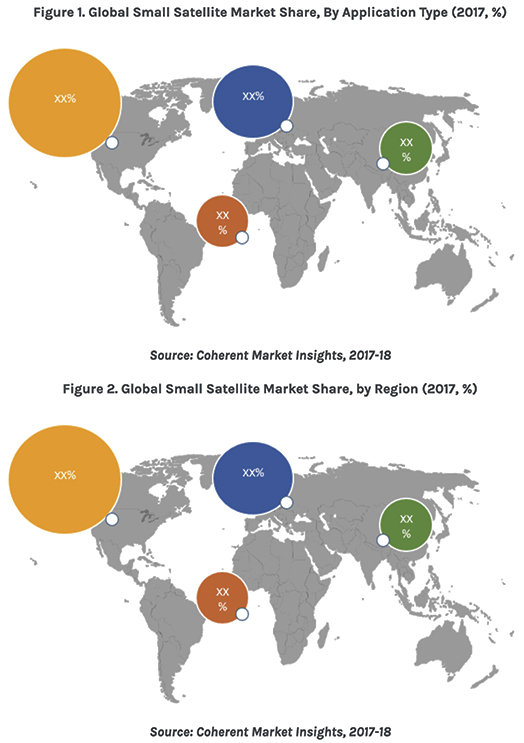

According to Coherent Market Insights, the global smallsat market was valued at $2.92 billion in 2017 and is projected to exhibit a CAGR of 26.8 percent over the forecast period (2018 – 2026).
The decline in cost of satellite launching, technological innovations, such as IoT, 3D printing and satellite miniaturization, increasing need for crop and natural disaster monitoring and the steady demand for satellites for R&D are some of the factors driving smallsat market growth. According to Coherent Market Insights analysis, around 7,000 smallsats are expected to be launched at an average of 580 smallsats, annually by 2022, and 820 smallsats annually by 2027. Smallsats can be used in various applications such as Earth Observation (EO), communication, and data collection services.
Increase in funding for research and development of smallsats is expected to boost the market growth. For instance, in September of 2018, France’s The National Center for Space Studies (CNES) had set an $103.7 to $129.63 million fund named CosmiCapital that focuses on space and space applications. In the U.K., the $90 million Seraphim Space Fund that is managed by Seraphim Capital was launched in 2017.
Among satellite size, the nano-satellite segment is expected to witness significant growth in the market during the forecast period. In 2017, the nano-satellite segment was valued at $143.7 million and is expected to reach $356.1 million by 2026, witnessing a CAGR of 13.43 percent. Nano-satellites can be used in EO, surveillance, communication, and other applications. Nano-satellites can operate under harsh environmental conditions and are cost effective, which makes them preferable for space missions.
Miniature satellites leverage advances in computation and packaging to produce sophisticated to produce mission capabilities. Moreover, they can ride share with other space missions and they offer private companies, universities, and government space agencies the ability to perform space missions. However, a lack of dedicated launch vehicles, design related restrictions, programmatic risks, are some of the factors that may affect market growth.
Key Market Takeaways:
- The global small satellite market is projected to witness a CAGR of 26.8 percent during the forecast period (2018 – 2026)
- Among region, North America held dominant position in the market in 2017, accounting for 55% of the market share by value. The market in the region is expected to witness a CAGR of 13.1 during the forecast period and retain its dominance, owing to increasing funding by government and private organizations for development and launch of small satellites. Moreover, presence of key market players is also expected to drive growth of the small satellite market in this region.
- For instance, in May 2018, the National Aeronautics Space Association (NASA) launched a CubeSat mission — GTOSat— an earth observatory small satellite — which will provide key observations of the environmentally forbidding radiation belts that encircle Earth. In April 2018, NASA launched a new ASTERIA smallsat that is only slightly larger than a box of cereal and can be used to study planets orbiting other stars.
- Major players operating in the global small satellite market include, Airbus S.A.S, Boeing, Lockheed Martin Corporation, Northrop Grumman Corporation, Thales Group, SpaceX, Space Systems/Loral, LLC, Mitsubishi Electric Corporation, Ball Corporation, and Indian Space Research Organization (ISRO)

